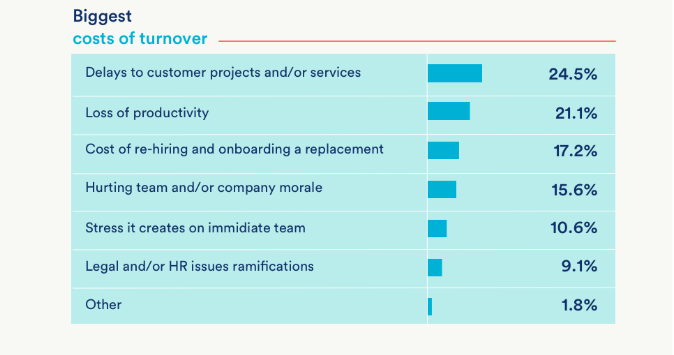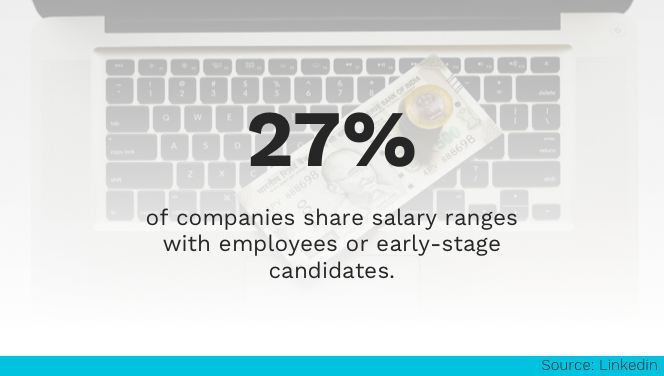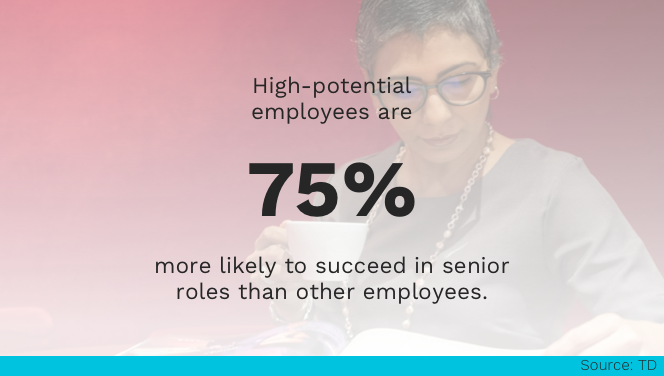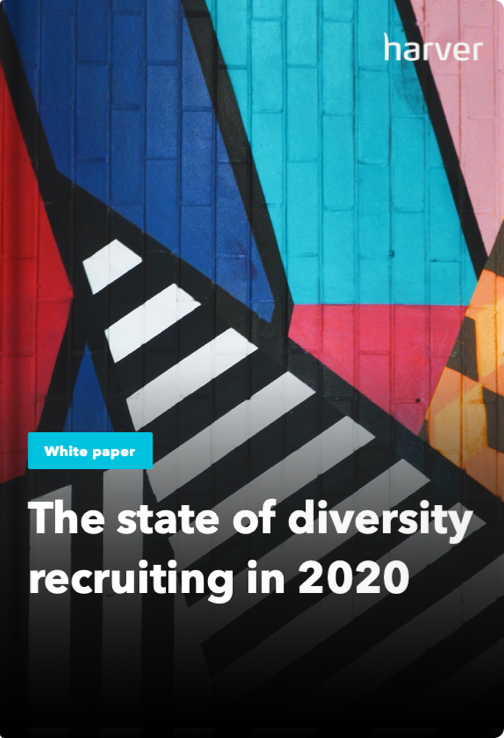Over the last decade, recruitment has been changing. Some of the developments have been glacial, others have happened at lightning speed. Recruitment has come out of the dark ages and has well and truly embraced our age of technology.
Talent acquisition is moving away from paper resumes and phone screenings towards an emphasis on skills assessments and video interviews. From reactive hiring to proactive recruitment and from making random choices to focused selection.
So with all these exciting changes happening in such a short space of time, what can we expect from recruitment in 2020? What are the recruiting trends that we will see more of in 2020?
What’s in?
Like what you see?
Don’t miss out. Subscribe to our quarterly digest to get the latest TA and TM resources delivered right to your inbox.
1. Retention-focused hiring
Looking to save money is every company’s bottom line. And turnover is costly. That’s why hiring employees for the long run instead of just filling empty seats asap will be a priority recruiting trend in 2020.
Hire not just to fill the position you need today, but be proactive and hire the leader you will need to get the job done tomorrow.
- Future proof. Hone in on the skills that you require for performing the necessary functions not just for now, but in the future too. Look for candidates who are flexible, ie capable of delivering what you require today, but who are also suited to learn the skills that you will need from them tomorrow.
- Assess candidates’ potential loyalty through their CV or their application, and determine their commitment to your organization during an interview.
- During the interview, switch up your interview technique to enable you to better assess candidates’ potential – adopt a fluid, conversational style interview, question them on challenges they might face, find out why they are motivated to join your organization, and develop questions that assess their soft skills such as creativity, innovative thinking, and problem-solving ability.
- Focus on retaining people in your organization, not just in their job. This not only benefits them, meeting their needs – they get wider exposure to your whole company as well as acquire a multitude of additional skills, plus they won’t get bored, but it benefits you too, because they will know the different facets of your company. Create a growth and development plan for every job you hire for so that candidates know what their potential career path through your company might look like.

If you lose employees, you’re also risking losing your customers. Hiring with retention in mind helps keeping employees on board.
2. Building and managing an agile workforce
The difference between a contingent and agile workforce is that a contingent workforce model is one where temporary or project workers (typically low- or medium-skilled workers) are brought in to specific roles and projects to augment an organization’s existing workforce when required.
An agile workforce is one that is focused on highly skilled workers with incredibly specialist skills, brought in when required from inside or outside of the organization.
One is not better than the other but they provide different, innovative solutions, to wholly distinct problems. A contingent workforce fills gaps, an agile workforce fills specialized talent gaps.
A growing number of businesses are recognizing that ‘knowledge workers’, ie those super-specialized workers with highly bespoke skill sets are instrumental to an organization achieving success.
However, they are an expensive addition to have on your workforce full-time, and more importantly, when they are employed full-time, they only spend 39% of their time doing the job they were hired to do.
An agile workforce, therefore, is made up of a uniquely non-traditional group of workers. A mix of internal and external specialist employees who can be brought together, mixed and matched when required, to achieve specific, critical business, value-added outcomes.
One very important point to note for this recruiting trend – an agile workforce won’t happen unless you have implemented fit for purpose technology to allow them to carry out their roles effectively.
Building an agile workforce internally:
- Delegate – empower employees to take on new challenges, give them autonomy to perform on their own.
- Rotate employees so they are exposed to your wider organization, not pigeon-holed in their current role.
- Encourage employees to explore, innovate and make decisions without fear of failure or negative repercussions if they do.
3. Transparency in hiring
Honesty works both ways. If you want candidates to be honest with you, be honest with them.
During your recruitment process, don’t use technology secretly or in an underhanded way. Be open and transparent with candidates about how you are conducting your selection, what your selection criteria are, and what technology (if any) you are using to help you with your decision making.
If you want to attract the top talent, a top recruitment trend going forward will be being transparent in what you can offer candidates from the outset. There’s no point in wasting anyone’s time by being coy, it will only cost you in the long run if you make a bad hire.
Set and manage candidate expectations from the beginning:
- Share the salary range with candidates or risk alienating great candidates by forcing them to undervalue themselves or worse, contributing to the gender pay gap.
- Stick to timelines you’ve created and clearly communicate them, even if the process is lengthy.
- Provide feedback after each interview, even if it’s negative (as long as it’s constructive). Candidates can learn and grow from such feedback.

More than a half of companies don’t share salary ranges and are unlikely to start. In contrast, 45% of job seekers want insights around benefits and perks, flexibility and salary ranges for relevant roles before even submitting an application. Being transparent can help you become a more competitive employer.
4. Increasing importance of candidate engagement
The importance of candidate engagement as a recruiting trend can not be overemphasized. It is one of the easiest things you can do – we live in an age of tech after all, and the wealth of communication channels you have at your disposal are vast. So use them.
- Use every channel you have to engage with candidates.
- Use multiple platforms if you prefer, just keep candidates engaged throughout the recruitment process and you’re onto a winner.
- Keep the communication channels open – use social media, emails, texts, chatbots, whatever you have access to and what your candidates use.
- Personalize your approach to each candidate – it’s quick and easy and besides, no one likes a ‘Dear Applicant’ letter. Thanks to recruiting automation, you can successfully engage candidates even in high volume hiring.
- But don’t bombard candidates with constant, unnecessary comms, only get in touch to give them content that adds value, otherwise, you’re wasting their time and yours.
5. Using strategic talent insights
Every company wants to build the best workforce possible and retain their top talent. How do you do this? By creating and using the recruiting trend of strategic talent insights, drawn from your available talent intelligence.
Talent intelligence is everything from insights at the micro-level, ie finding out everything you can about candidates from employment history to their social media activity, through to macro-level data such as your existing talent pools and what company culture you want to create.
This allows you to do some strategic workforce planning. If you know why you’re losing top talent to the competition, you can do something about it. If you know where you’ll have talent gaps in the next few years, you can work to fill them now.
And appreciate the advisory role of recruiters. Don’t just use recruiters to source talent for you, realize that with the changing nature of recruitment has come the changing role of recruiters. Recruiters are incredibly strategic and can provide invaluable insights into your (future) workforce that will help your business grow.

Workforce development has a huge impact on company growth and results. Why not utilize the knowledge of your talent acquisition specialists to bridge the talent gaps?
6. Upskilling recruiters
Don’t forget that recruiters need training too, particularly if your demands are changing.
Be on point with your recruitment trends and enable your recruiters to learn new skills to hire you great people.
For example:
- Teach recruiters sales skills to enable them to sell roles to candidates, to sell the candidates to hiring managers.
- Teach them the art of story-telling, how to create content that attracts candidates.
- Show them proven marketing skills that will get candidates in.
- Teach them negotiation skills to arrange the best conditions for both the candidate and the company.
- Upskill recruiters through online and offline courses or in-house training (if you have it).
The state of diversity recruiting in 2020
7. Emphasis on employee life cycle in employer branding
Don’t work really hard to draw candidates into your organization (1% of their experience with the company) and then neglect the rest of their career path (the remaining 99%).
A huge recruiting trend for 2020 will be to live your core values and bring your employer brand to life with a strong company culture. Don’t forget that your branding also incorporates employees leaving your organization – make every stage of the employee life cycle is a positive one.
One major aspect of employer branding that shouldn’t be ignored is company culture. And what better way to demonstrate company culture than by focusing on employee journey at the company, not just at the beginning when you’re recruiting talent, but their potential career path too. Not only will this aid with your retention, but it will highlight what career training and development they can expect with you too.
It also helps with retention in that it turns your employees into your brand advocates – no one is going to share their experiences and encourage others to join the organization if they don’t like you, or have no intention of staying. That and there’s no stronger draw to a company than a happy employee.
This is especially important for global employers with employees in multiple countries to keep the employer branding consistent. Take the video created by Volvo Group Belgium as an example to highlight their message ‘together we move the world’:
And don’t forget that your employer branding must appeal to multiple generations as the generational diversity in the workforce is greater than ever.
8. Focus on cross-functional skills
Candidates with cross-functional skills have a more rounded view of a business, so another recruitment trend in 2020 will be to hire, further develop and retain employees with cross-functional skills in order to create cross-functional teams and for project-based work.
Help employees to develop these skills:
- Encourage individuals to pursue cross-functional skills training on their own with lifetime learning – you want employees with a mindset for growth after all.
- Provide mentors from outside the team to share their experiences or encourage a buddy system, whereby you partner up with someone who has a skill you lack and vice versa and teach each other.
- Hold corporate training to help close knowledge gaps.
- Subscribe to online resources and courses – there is a lot of free information available if you look for it.
9. Assessing potential
According to HBR, future high performers possess 3 characteristics – ability, social skills, and drive.
The top 20% of performers accounts for 80% of organizational output, that’s why organizations need to start assessing their candidates for potential.
To take advantage of this recruiting trend, think assessing learning ability, growth mindset, emotional intelligence, etc.
Do this through:
- Defining your requirements before you start recruiting and clearly conveying them to candidates so they know what you’re looking for.
- Asking specific interview questions.
- Pre-employment assessments – cultural fit, cognitive ability or situational judgement, even personality questionnaires.
- Speaking to their references or past employers.

Hiring high-potential employees will make your job of recruiting senior professionals much easier further on.
10. Improving the interview process
A bad hire is just as much due to flawed interview processes as the employee themselves. So stay ahead of the recruitment trends and look for ways to make your interview process fairer and less biased, for example, by using tech innovations such as conversation analytics.
Other ways to improve the interview process include:
- Train interviewers to interview and involve more people in the hiring process.
- Focus on what you want to achieve with each hire, what skills and competencies matter the most.
- Create set interview questions and have interviewers stick to the script.
- Make up your interview panel of diverse employees.
- Consider having candidates shadow a colleague for a day or so.
- Follow up with every interviewee, not just the successful ones, and provide feedback whenever possible.
11. A shifting understanding of diversity & inclusion
Organizations around the world increasingly understand that having a diverse workforce is a business imperative. Ability to capture and retain a diverse client base, better team collaboration, and above-average financial returns are just some of the benefits diverse teams experience and by now, companies are well aware of that.
They are also starting to realize that hiring diverse employees and fighting pay gaps isn’t enough. Instead, they must build a culture where everyone’s voice is heard and where every employee feels empowered to do their best work. In 2020, organizations will be making sure that inclusion is deeply embedded in their company cultures and establishing a sense of belonging in their workforce.
And how will this be happening?
Businesses will continue implementing various measures and programs to ensure that all employees can thrive. These include having visible role models to show a viable path forward, providing formal sponsorship and mentorship opportunities, flexible work programs, and other effective diversity initiatives that companies will be supporting.
Furthermore, large organizations have already started hiring dedicated diversity & inclusion employees. The number of such job openings has increased by 30% year-over-year and this trend is very likely to continue throughout 2020. And while smaller organizations may not have the budget to hire a dedicated D&I manager, these responsibilities can permeate into other generalist HR and recruitment roles.
In general, the understanding of diversity and inclusion is shifting from just hiring people of different backgrounds and making sure that everyone has access to the same benefits to building workplaces of the future where all employees are treated fairly, with respect and where they feel valued and welcomed.
Over to you
We can’t expect hiring to get any easier in 2020. That’s why it is essential to stay on top of the recruiting trends and industry developments to be able to improve how your company attracts and hires talent. Use this list as an inspiration to evaluate your own recruitment process and make it better in 2020.
Happy hiring!
The state of diversity recruiting in 2020



